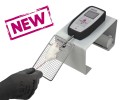Authors
YJ Kim, HJ Kim, WJ Lee, JK Seong
Lab
Laboratory of Developmental Biology and Genomics, BK21 Program for Veterinary Science, College of Veterinary Medicine, Seoul National University, Seoul, South Korea
Journal
Laboratory Animal Research
Abstract
Aerobic exercise is well known to have a positive impact on body composition, muscle strength, and oxidative capacity. In animal model, both treadmill and wheel running exercise modalities have become more popular, in order to study physiological adaptation associated with aerobic exercise. However, few studies have compared physiological adaptations in response to either treadmill exercise (TE), or voluntary wheel running exercise (WE). We therefore compared each exercise intervention on body composition and oxidative markers in male C57BL/6_N mice. The total distance run was remarkably higher in the WE group than in the TE group. Both forms of exercise resulted in the reduction of body weight, fat mass, and adipocyte size. However, the average for grip strength of WE was higher than for control and TE. Interestingly, PGC-1_ expression was increased in the gastrocnemius (glycolytic-oxidative) and soleus (oxidative) muscle of TE group, whereas WE showed a significant effect on PGC-1alpha expression only in the soleus muscle. However, muscle fiber type composition was not shifted remarkably in either type of exercise. These results suggest that TE and WE may exert beneficial effects in suppressing metabolic risks in mouse model through attenuating body weight, fat mass, size, and increase in mitochondria biogenesis marker, PGC-1 alpha
BIOSEB Instruments Used:
Grip strength test (BIO-GS3)

 Pain - Thermal Allodynia / Hyperalgesia
Pain - Thermal Allodynia / Hyperalgesia Pain - Spontaneous Pain - Postural Deficit
Pain - Spontaneous Pain - Postural Deficit Pain - Mechanical Allodynia / Hyperalgesia
Pain - Mechanical Allodynia / Hyperalgesia Learning/Memory - Attention - Addiction
Learning/Memory - Attention - Addiction Physiology & Respiratory Research
Physiology & Respiratory Research
 Pain
Pain Central Nervous System (CNS)
Central Nervous System (CNS) Neurodegeneration
Neurodegeneration Sensory system
Sensory system Motor control
Motor control Mood Disorders
Mood Disorders Other disorders
Other disorders Muscular system
Muscular system Joints
Joints Metabolism
Metabolism Cross-disciplinary subjects
Cross-disciplinary subjects Preclinical studies and opioids: role in crisis management in the United States
Preclinical studies and opioids: role in crisis management in the United States 